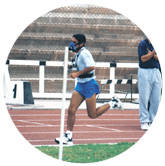Introduction
|
|
Physical activity is defined as any body movement produced by a muscular action with a resulting increase of the energetic needs. At the same time, exercise is the planned and structured activity with a clear purpose and that may increase the physical aptitude level of a person at a certain point of his life (Mc Ardle, 1996). |
According to the OMS, health is defined as having a complete physical, mental, psychological and social well being, not only the lack of diseases. A good level of physical aptitude is related to good health conditions which leads to the prevention of chronic diseases. The lack of physical activity conveys a decrease in the physical performance. This also means lack of muscular tissue, increase of fat storage and a lower cardiorespiratory capacity. (Osorio y Venegas, 1997).
Human beings increase their physical performance since childhood and reaches its highest level between adolescence up to 30 years. After that the lack of this capacity is related not only to age but mainly to life styles. Thus, a physically active individual has an aerobic capacity 25% higher than any other age category, when compared to a sedentary individual. In this way, a 50 year old who is physically active can keep functional levels similar to the ones of individuals who are 20 years younger (Mc Ardle 1996).
